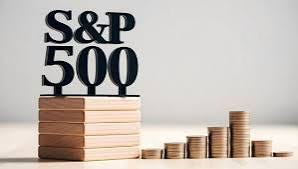The ABCs of the S&P 500
The S&P 500 is the most important market index in the world. What is it all about? How is it calculated?
In 1957, Standard & Poor’s, a company formed by the merger of Standard Statistics Company and Poor’s Publishing, introduced the Standard & Poor’s 500 which is popularly known as S&P 500.
The S&P 500 is a market index that tracks the performance of 500 companies listed on NYSE and Nasdaq. A market index is a group of investments, such as stocks, that track the performance of a specific segment of the financial market.
As at April 2024, the S&P 500 comprises of 503 common stocks issued by 500 large-cap companies traded on the NYSE and Nasdaq. The list also includes the 30 companies that compose the Dow Jones Industrial Average.
How Companies on the S&P 500 are Selected
S&P 500 is managed by the S&P Dow Jones Indices committee. The S&P Dow Jones Indices LLC is a joint venture between S&P Global and the CME Group.
The U.S. Index Committee which is under the S&P Dow Jones Indices committee determines whether a stock should be added to the S&P 500.
In selecting a stock, the Committee uses some quantitative criteria which includes:
1. Market capitalization - the company must have a sizeable market capitalization to qualify to be the S&P 500. Essentially, such company must be a large-cap company.
2. Sufficient public float - a large percentage of the company's shares should be available for public trading.
3. Contributes to sector balance - The index must be distributed across different sectors. Therefore, selecting an eligible stock must contribute to sector balance in the index.
Other criteria includes: sufficient liquidity, Financial viability/earnings etc.
Credit:S&P 500 Global
Currently, the S&P 500 has 503 listings because 3 companies have two classes of Shares. For example, Alphabet the parent company of Google has two classes of Shares: GOOGL Alphabet Inc. GOOGL (Class A) and Alphabet Inc. GOOG (Class C).
It should be noted that the exact combination and weightings of the various constituencies within the S&P 500 are adjusted as the economy changes, and some stocks have been added and removed from the index over the years.
How The S&P 500 Is Calculated
In calculating the S&P 500, the committee makes use of a Float-adjusted Market Capitalisation. Float refers to the shares of the company which are available for public trading. This does not include outstanding restricted shares held by company insiders which are non-transferable. Many companies issue stock options and restriction Stock Units for top executives and employees. This stock options are not vested until certain conditions are met. Although, they are part of outstanding shares, these shares are not part of the floating shares because they are not traded on the market.
The Float-adjusted market cap of a company is determined by the total market value of all of its floating shares. The floating shares of a company is usually included in the equity Section of the balance sheet which is filed with the Securities and Exchange Commission.
Alternatively, we can subtract the number of non-transferable restricted stock from the company’s outstanding shares.
Share Price * (Outstanding Shares – Restricted Shares)
Or
FAMC = Share Price * Floating Shares Outstanding.
Tesla inc. Credit: Yahoo Finance
Calculating The S&P 500
Step 1:
Calculate the Float-adjusted Market Capitalisation (FAMC) of all the 500 companies.
For example: FAMC of Berkshire Hathaway = Share Price * (Outstanding Shares – Restricted Shares)
This will be done for all the 500 companies.
Step 2:
Add the FAMC of all the 500 companies to get the Total Market Cap of all the 500 Companies on the S&P 500
Step 3:
Total Market Cap of all the 500 Companies on the S&P 500 / Divisor.
The Divisor is proprietary to the U.S. Index Committee. It is used to ensure that the price of S&P 500 is stable.




